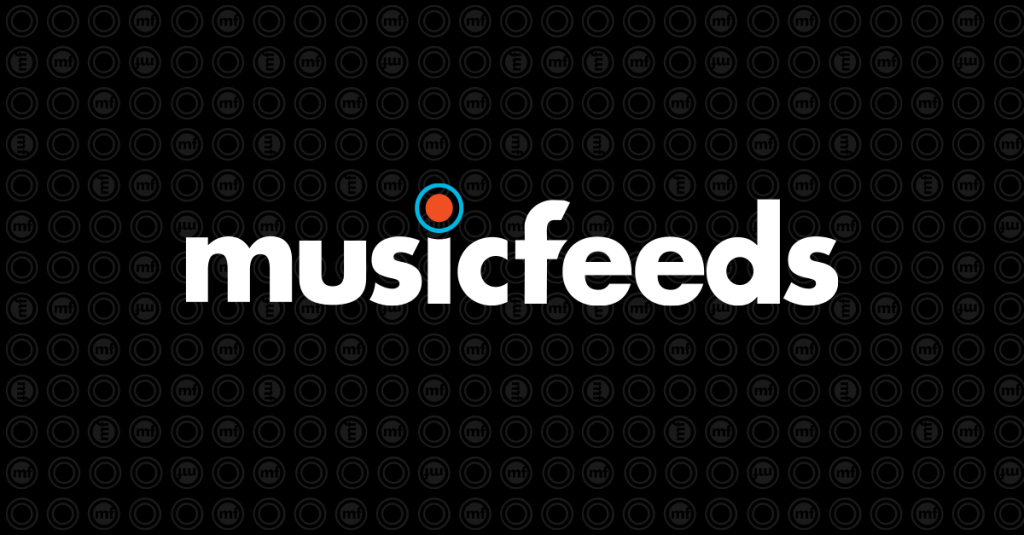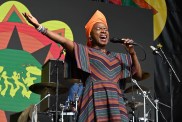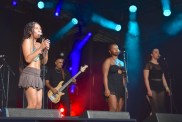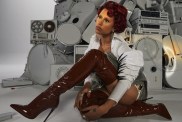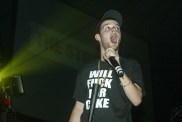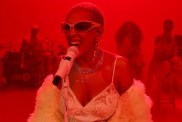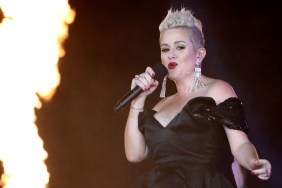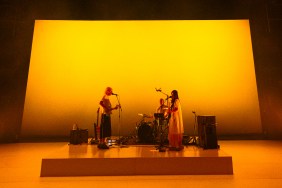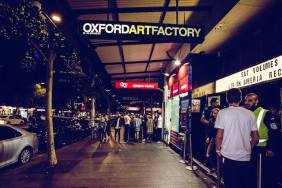The Sydney Fringe has firmly ensconced itself in the city’s cultural life. It’s only one day until Sydney is overcome with independent and emerging visual and public art, cabaret, music, pop ups, mini-festivals and other edgy shenanigans. Think of it as the cultural equivalent of an Eminem-style rap face-off with neon-branded torrent of artistic mediocrity – the reams of whirring pokies, hideously “renovated” pubs playing Jason Derula at obscene decibels, and pop wannabes with the intellectual density of a Chicken McNugget that dominate the mainstream.
A smorgasbord of subcultural cinematic delights awaits those who dare to delve into the Sydney Fringe Festival’s digital arts program. Music Feeds chatted with digital arts Fringe curator Larry Heath on what he reckons are the highlights of this year’s multimedia program, and the challenges and prospects ahead for digital artists in this country.
MF: Who are your top three recommended digital artists to see at this year’s Fringe?
LH: First up is Irish artist Adrian O’Connell’s work ‘Library’, which is screening as part of the Carriageworks Fringe Arts: Immerse exhibition. It’s a piece that was filmed in the atrium of a library, and as the artist says himself, “it examines the trend away from traditional reading and the possible diminution of the written word due to our growing dependence on technology.” A striking piece which will dominate the space at Carraigeworks.
Next we have Ken Simpson with his work ‘Ethereal Nightscapes’. He’s going to be “using the city as his canvas” – projecting onto buildings during Opening Night, which takes over the streets of Newtown this Friday. He’s inspired by the patterns that nature creates, especially in urban wastelands and suburban areas. Taking this footage and then re-projecting it in an urban area such as King Street will certainly create some unique effects. Look out for it!
And finally we have the works of Scott Morrison, a local Sydney artist who has created more than his fair share of digital works over the years. Currently being commissioned for a major piece elsewhere, Scott is bringing the Fringe a couple of works previously displayed – but here in a new context, amongst new atmospheres and environments. Fans of Oprah will get a kick out of one of the pieces – and the other, originally projected within a building, will tantalise all your senses. His work is at the Seymour Centre during the entirety of the Fringe.
MF: Which emerging artists have really captured your attention? Who are the up-and-comings?
LH: I spend so much time watching music videos (see capturedsydney.com for the Sydney Fringe project I’ve curated, bringing together my love of the artform) it’s hard not to look towards the up-and-coming music video directors as a source of creative inspiration in the digital world. Take Radical Friend for instance. The young Los Angeles duo put together one of my favourite video clips in recent memory – Yeasayer’s “Ambling Alp”… and then they did this. Epic.
Rather than throw you a long list of the people and collectives to watch out for, I would recommend looking into the directors of your favourite music videos – both here and abroad – I can almost guarantee that they’ve got a long line of amazing video art behind them.

MF: What was your overall approach in curating the Fringe’s digital arts program?
LH: When it comes to the Fringe, we’re blessed as curators in that most of the artists come to you. And with the exception of the Captured project, for which I found the bands and filmmakers, I was lucky enough to have a wide array of talent from around the world do just that.
While last year we had most of our digital pieces in one location (Plump Gallery), this year we’ve spread out the works. I worked closely with the curator of the Visual Arts component of the festival – Lew Palaitis – to fit the works in with the themes of the Fringe Arts exhibitions at Carriageworks, the Seymour Centre and the Forum in Leichhardt. The goal was simple: utilise these amazing spaces to enhance the digital works we’ve been provided. For that I definitely feel we achieved our work.
MF: What trends can you identify in the digital arts community in this country?
LH: My gut reaction takes me right back to music and sound – and the interplay between it and the visuals on screen. There is always someone trying to come up with something exciting and new in this area, especially in Australia. It’s more than just what you see … it’s what you hear too.
MF: I sometimes see some digital artists’ work described as ‘designerly’ or ‘illustrative’, in much the same way as street art is sometimes described. Do you think digital art is respected in the same way that the more traditional artforms are? Do you feel that it’s a struggle for digital artists to gain recognition?
LH: I think digital artists face the same problem as photographers do these days: there’s this ‘anyone can do it’ attitude about it. This definitely makes it harder to stick out from the rest of the pack. And those that do are usually collectives of digital artists, working together to create the more ambitious digital artworks we’ve witnessed in recent memory – SUPERBIEN lighting the sails of the Sydney Opera House immediately comes to mind. What this shows us is two things: digital has the power to overwhelm the senses in ways that street and static art never could. It can be awe inspiring, hynpotising, exuberant. And second, in order to stick out from the crowd, you’re probably going to need quite a bit of money behind you. Or, in the case of VIVID, a government/state body.
With that in mind, it’s definitely difficult to get recognised as a digital artist, and it’s definitely a different sort of respect – but when you see the looks in the eyes of people enjoying something truly impressive in the digital arts, you know this is a respect that can definitely be earned.
The Sydney Fringe is on from September 9 to October 2. Check out the full program online.
